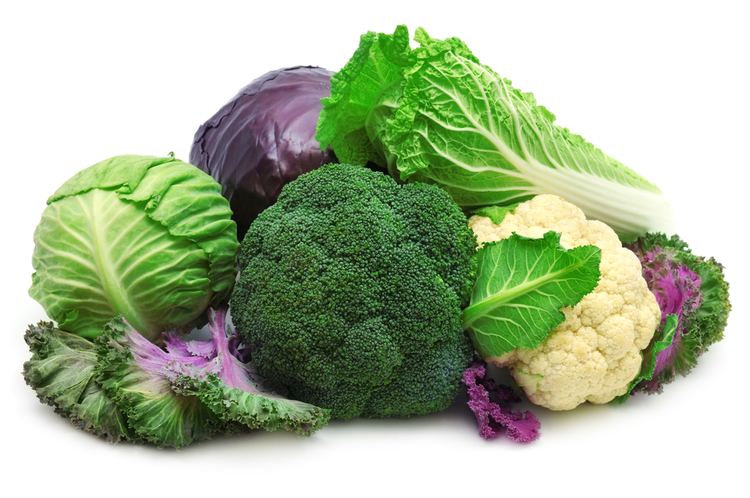 | ||
Representative species Similar Broccoli, Cabbage, Cauliflower, Kale, Brussels sprout | ||
Raw cruciferous vegetables and thyroid health my personal case history
Cruciferous vegetables are vegetables of the family Brassicaceae (also called Cruciferae) with many genera, species, and cultivars being raised for food production such as cauliflower, cabbage, garden cress, bok choy, broccoli, brussels sprouts and similar green leaf vegetables. The family takes its alternate name (Cruciferae, New Latin for "cross-bearing") from the shape of their flowers, whose four petals resemble a cross.
Contents
- Raw cruciferous vegetables and thyroid health my personal case history
- 10 healthy cruciferous vegetables superfoods
- List of cruciferous vegetables
- Research
- Drug and toxin metabolism
- Taste
- Goiter
- Nursing
- References
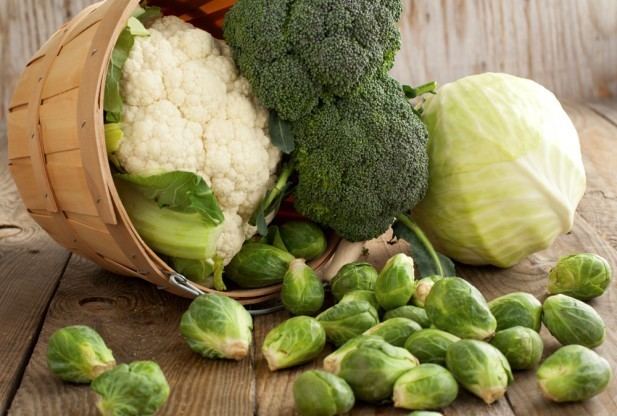
Ten of the most common cruciferous vegetables eaten by people, known colloquially in North America as cole crops and in the British Isles as "brassicas", are in a single species (Brassica oleracea); they are not distinguished from one another taxonomically, only by horticultural category of cultivar groups. Numerous other genera and species in the family are also edible. Cruciferous vegetables are one of the dominant food crops worldwide. They are high in vitamin C and soluble fiber and contain multiple nutrients and phytochemicals.
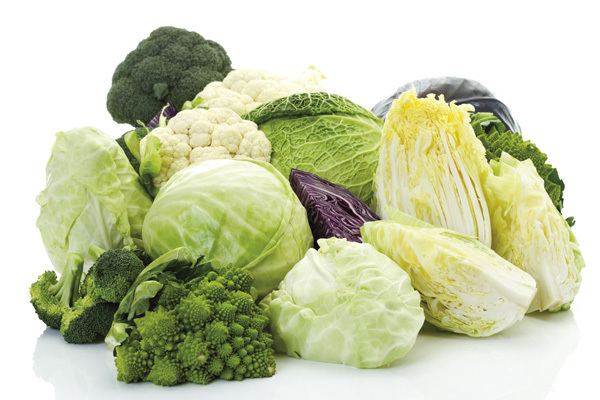
10 healthy cruciferous vegetables superfoods
List of cruciferous vegetables
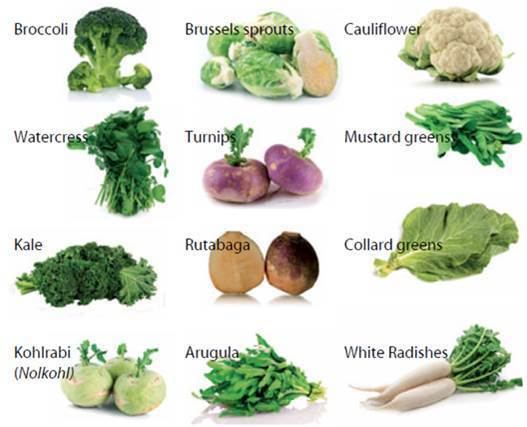
Extensive selective breeding has produced a large variety of cultivars, especially within the genus Brassica. One description of genetic factors involved in the breeding of Brassica species is the Triangle of U.
Research

Cruciferous vegetables contain glucosinolates which are under basic research for their potential properties of affecting some types of cancer. Glucosinolates are hydrolyzed to isothiocyanates (ITCs) by the action of myrosinase. ITCs, possibly a bioactive component in cruciferous vegetables, are being investigated for their chemopreventive and chemotherapeutic effects. As one example in laboratory research, ITCs such as phenethyl isothiocyanate reduced levels of the oncoprotein MCL1. Other in vitro research indicates ITCs may affect levels of the BCR-ABL fusion protein, the oncoprotein affecting mechanisms of leukemia.
Drug and toxin metabolism

Chemicals contained in cruciferous vegetables induce the expression of the liver enzyme CYP1A2. Furthermore, some drugs such as haloperidol and theophylline are metabolized by CYP1A2. Consequently, consumption of cruciferous vegetables may decrease bioavailability and half-life of these drugs.
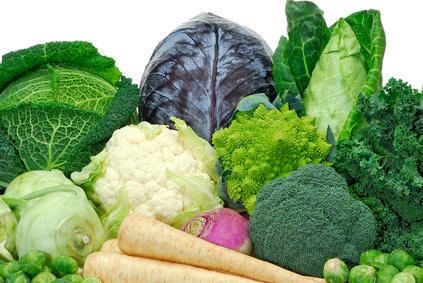
Brassicaceae contain a number of compounds under preliminary research for their potential hepato-protective properties. Alliaceous and cruciferous vegetable consumption may induce glutathione S-transferases, uridine diphosphate-glucuronosyl transferases, and quinone reductases all of which are potentially involved in detoxification of carcinogens such as aflatoxin. High consumption of cruciferous vegetables has potential risk from allergies, interference with drugs like warfarin and genotoxicity.
Taste
People who can taste phenylthiocarbamide (PTC), which is either bitter or tasteless, are less likely to eat cruciferous vegetables, due to the resemblance between isothiocyanates and PTC.
Goiter
Cruciferous vegetables can potentially be goitrogenic (inducing goiter formation). They contain enzymes that interfere with the formation of thyroid hormone in people with iodine deficiency. Cooking for 30 minutes significantly reduces the amount of goitrogens and nitriles. At high intake of crucifers, the goitrogens inhibit the incorporation of iodine into thyroid hormone and also the transfer of iodine into milk by the mammary gland.
Nursing
Brassica species may cause baby colic in breast-feeding, although the evidence for this is not strong.
